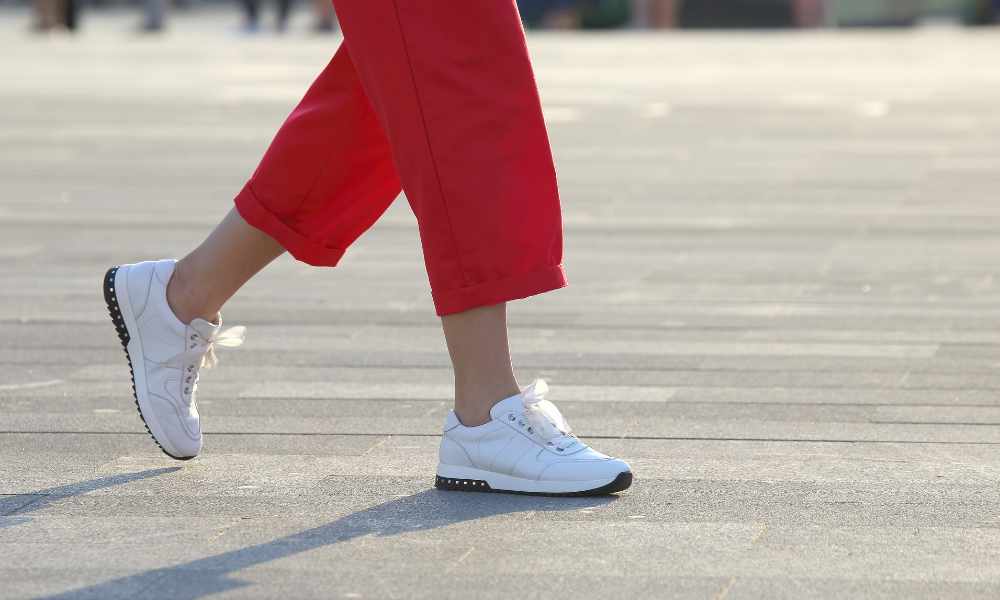Walk Without Pain: Best Shoes for Sciatica Sufferers
Walk Without Pain: Best Shoes for Sciatica Sufferers

Sciatica refers to pain that radiates along the path of the sciatic nerve, which branches from your lower back through your hips and buttocks and down each leg. It typically affects only one side of your body.
Causes of Sciatica
best shoes to wear for sciatica, is usually caused by a herniated disk, bone spur on the spine, or narrowing of the spine (spinal stenosis). It can also be triggered by certain lifestyle factors such as prolonged sitting, obesity, or wearing improper footwear.
Symptoms of Sciatica
The most common symptom of sciatica is pain that radiates from your lower back down to your leg. You may also experience numbness, tingling, or weakness in the affected leg.
Impact of Shoes on Sciatica
Importance of Proper Footwear
Choosing the right shoes is crucial for sciatica sufferers as it can either alleviate or exacerbate the pain. Proper footwear provides support and alignment, reducing pressure on the sciatic nerve.
How Shoes Affect Sciatica
Ill-fitting shoes can alter your gait and posture, leading to increased strain on the lower back and aggravating sciatic nerve pain. On the other hand, supportive shoes with cushioning and arch support can provide relief by promoting proper alignment.
Features to Look for in Sciatica-Friendly Shoes
When shopping for shoes, look for features such as cushioned insoles, arch support, shock absorption, and a supportive heel counter. These elements help distribute pressure evenly and reduce the impact on your lower back and legs.
Best Shoes for Sciatica Sufferers
Orthopedic Shoes
Orthopedic shoes are specially designed to provide optimal support and alignment for individuals with foot and lower limb conditions. They often feature cushioned insoles, arch support, and a wide toe box for added comfort.
Cushioned Running Shoes
Running shoes with ample cushioning help absorb shock and reduce the impact on your joints, including the lower back and legs. Look for models with a supportive midsole and flexible outsole for added comfort.
Stability Shoes
Stability shoes are engineered to control excessive motion and provide support for overpronation, a common issue among sciatica sufferers. They offer a blend of cushioning and stability to promote proper foot alignment.
Slip-On Shoes with Arch Support
Slip-on shoes with built-in arch support are convenient for everyday wear and offer relief for sciatica sufferers. Look for styles with a supportive footbed and stretchable upper for a snug yet comfortable fit.
Tips for Choosing the Right Shoes
Consultation with a Podiatrist
If you’re unsure about the best footwear for your condition, consult with a podiatrist or orthopedic specialist. They can assess your gait and foot structure to recommend suitable shoe styles.
Test the Shoes
When trying on shoes, walk around the store and pay attention to how they feel. Look for shoes that provide adequate support and cushioning without causing discomfort or pain.
Comfort over Style
While style is important, prioritize comfort and functionality when choosing shoes for sciatica relief. Opt for designs that offer ample support and cushioning, even if they may not be the trendiest option.
Lifestyle Changes for Sciatica Relief
Importance of Exercise
Regular exercise, particularly low-impact activities like swimming or yoga, can help strengthen the muscles surrounding the sciatic nerve and alleviate pain. Incorporate stretching and strengthening exercises into your routine to improve flexibility and mobility.
Proper Posture
Maintaining proper posture is essential for reducing strain on the lower back and alleviating sciatic nerve pain. Practice good posture habits such as sitting up straight, avoiding slouching, and using ergonomic furniture.
Stretching Routines
Incorporate stretching routines targeting the lower back, hips, and hamstrings to relieve tension and improve flexibility. Focus on gentle stretches that elongate the muscles and promote relaxation.
Conclusion
Finding relief from sciatica pain begins with choosing the right footwear that provides support and alignment. Orthopedic shoes, cushioned running shoes, stability shoes, and slip-on shoes with arch support are among the best options for sciatica sufferers. Prioritize comfort and functionality when selecting shoes, and consider consulting with a podiatrist for personalized recommendations. Additionally, incorporate lifestyle changes such as regular exercise, proper posture, and stretching routines to further alleviate sciatic nerve pain and improve overall well-being.




